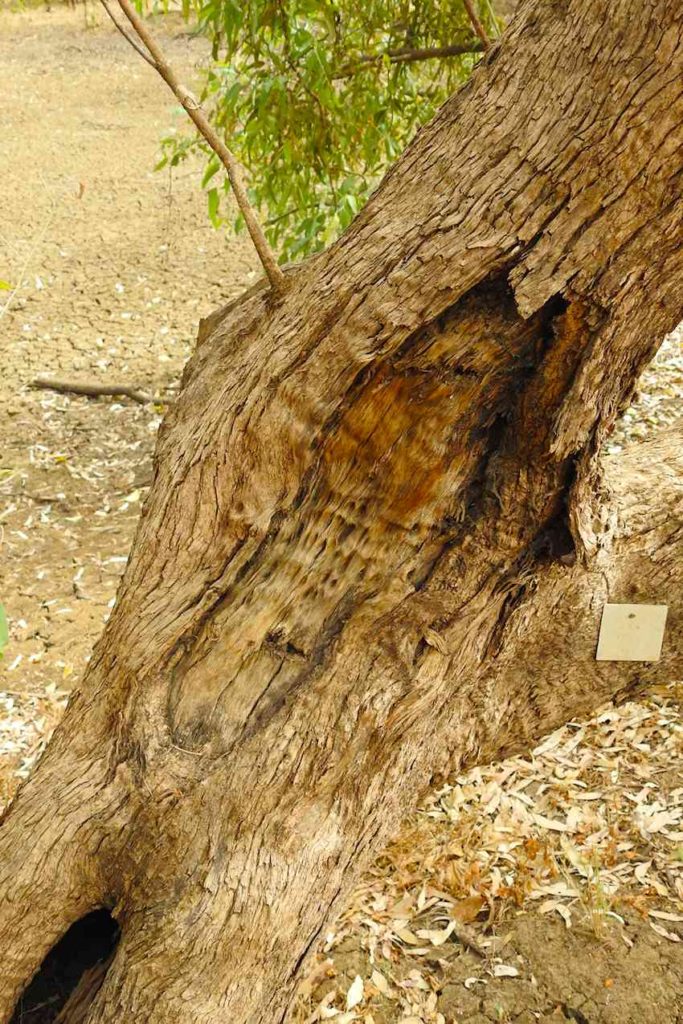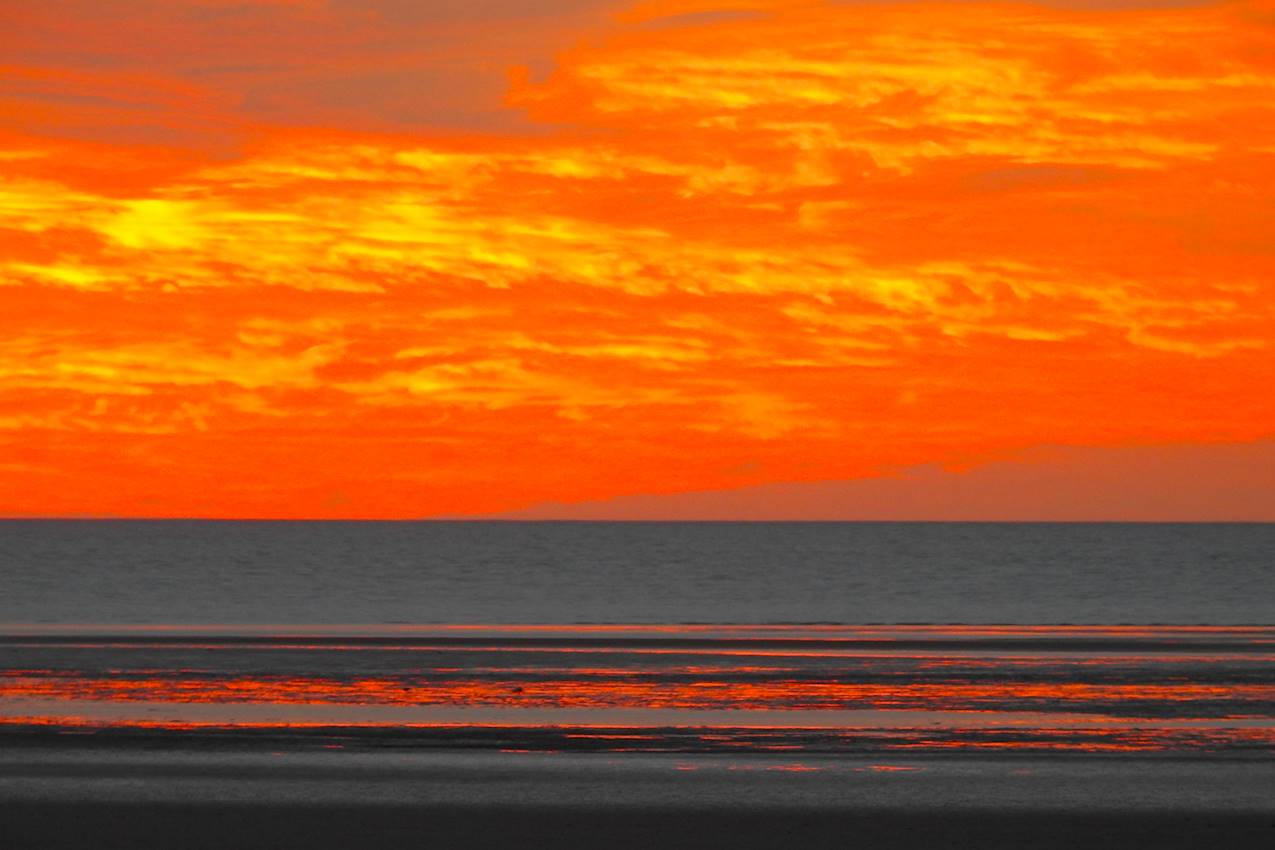Karumba is about the only place along the southern gulf coast where you can actually see the Gulf. Access to the Gulf is normally restricted because of massive tidal flats along the coast, which would be extremely difficult to walk through and pretty dangerous, due to resident crocs. At least at Karumba you can see and get a feel for the Gulf itself.
Fishing is the lifeblood of Karumba and really, if you don’t fish, there is not much to do here. The town is located at the mouth of the Norman River. There are a couple of walks along the river front and Karumba has an interesting history. It was a major jumping-off point for the luxurious Qantas Empire Airways flying-boats that plied between Australia and Singapore and then on to Europe in the 1930s and it was an important Catalina flying-boat base during WWII. The current town boat ramp is a remnant of the wartime, allowing the flying boats to drive up the ramp to dry land for refueling and servicing.
Today the town is the main port for the local prawning fleet, with 12 large vessels that bring in many thousand kilos of prawns in season (apparently worth around $A120 million). The prawns are snap frozen on board and returned to the town for transportation to market.
The local hotel has the interestingly named Animal Bar. Apparently in its day, the hotel had a reputation for being a pretty rough place. Considering the town didn’t get a police presence until 1969, it must have been a place to avoid in the day! I decided the Animal Bar was a good place to experience the local flavour, but it was actually a bit disappointing… Not quite so bad these days, but apparently it can still get a bit rough when the fishing fleet is in town for the prawn harvest season.
I took a sunset cruise, which takes you out into the Gulf – which is only about 5m deep in this part – and drops you off on a sand island to enjoy some local prawns, a beer or two and a magnificent Gulf sunset (the island is checked for crocs before you get off the boat). The prawns were local banana prawns, fresh cooked for the evening. I always find prawns are a lot of work for not much return (by the time you get the head off and then all the shell, then you get one quick mouthful…) Anyway, they were nice to chomp through while watching the most amazing colours of a sunset I had seen for a long time.

Normanton is located on the banks of the Norman River and is the home of the Gulflander train, which started life in 1890s to transport gold from the nearby town of Croydon, which was in the midst of a gold rush. It is still a legitimate railway, with a weekly service to Croydon on Wednesdays, returning the Normanton on Thursdays, although the gold rush days are long gone. In between this trip, the railway runs shorter runs to allow people to experience the fabulous old train.

The current train is from the early 1950s and is a Gardner diesel motor rail with a four speed ‘crash’ gearbox – the driver has to change down to get the train up hills! This motor car pulls two pretty classy carriages with polished wood panels. It is pretty obvious that the guys who run the train are very proud of it and enjoy their jobs (they are Qld Rail employees). It is the only railway in Australia which still gives distances in miles.

It is quite fascinating to experience, with the journey I joined being about 1 hour return. But it is also a very rough journey over the old track, with the old train bouncing around all over the place as it travels along, which is pretty wearing after a short time. So if you were on the long journey to Croydon, you would be very glad to arrive, I reckon!
Karumba was also home to ‘Krys the Savannah King’. Krys was the largest authenticated croc ever to be shot by a local croc hunter, Krystina Pawlowski in July 1957 in the Norman River. He was 8.64m or over 28 feet in length and would easily have swallowed a man whole, I reckon. Of course, the then politically correct pastime of shooting crocs took the crocs to the edge of extinction! They have now recovered and it is not unusual to see some pretty large specimens sunning themselves on the riverbanks across the Gulf. The Krys on display in town is a replica built by an artist from photographs taken at the time the croc was caught (which are now lost) and gives a good idea what this monster must have been like. Not something you would want to meet close up at any time, really!

After Normanton, I followed The Savannah Way across the Gulf and into the NT. The road follows the old stock routes pioneered by the early settlers who opened up the Gulf country in the late 1800s. Nat Buchanan, one of our most famous stockmen, took 20,000 head of cattle through this country in the 1870s, which has gone down in droving history as one of the largest cattle drives ever achieved. It was wild and lonely country then. It is still pretty wild and lonely country.
Towns, such as Burketown and Borroloola were once lawless outpost where illegal pastimes (such as smuggling and illicit grog running) were rife. Now they are respectable fishing towns and give the impression of being pretty sleepy. There are still vast distances between these towns and the roads are dirt and pretty rough; the country is still the domain of water buffalo, feral cattle, snakes and dingoes.
Not far from Normanton is Camp 119. This was the most northerly camp site of the Burke and Wills expedition of 1860-1861. Four men – Burke, Wills, Grey and King – camped here in mid-February 1861, six months after the expedition had left Melbourne to reach the north coast of Australia. Their supplies were getting low and wet season floods were making travelling through the country difficult. While Burke and Wills made a desperate dash to try and reach the coast, Grey and King blazed trees around the camp to prove the expedition had been there. These blaze trees are still visible today but unfortunately the letters carved into the blazes are no longer readable (the actual blaze trees have been authenticated and marked as such).

Burke and Wills never actually made it to the ocean – they were stopped by the mangroves that grow thickly along the Gulf coast, but they could hear waves breaking, so they knew the ocean was frustratingly close. They were the first to cross the continent from South to North but unfortunately they did not survive the return journey. Grey died on the return journey and Burke and Wills both dying on the banks of Cooper Creek in northern South Australia.
Of all the original expedition members, only King survived the journey, with the help of some compassionate Aborigines. Much has been written about the ultimate fiasco of the Burke and Wills expedition – including the unlikable nature of Burke himself – but it is sad to reflect that the expedition is mainly remembered for its failure.
I found a very nice camp right next to the beautiful and inviting Leichhardt River.

However, if I ever needed a reminder not to go swimming here, my closest neighbour certainly encouraged me to stay high and dry on the bank!

Hell’s Gate is a roadhouse with a bar and a good meals. Although it has quite a dramatic name, it is relatively peaceful and quiet today. This gap in a rocky escarpment got its name during the 1890s when it was known to be a dangerous place to head to.
After Hell’s Gate, it was a long journey into wild, unlawful country, where there was no police presence until Katherine in the NT. At that time, there were plenty of drovers and miners looking to travel into this country and the Aborigines resented invaders in this part of the Gulf – there are many sad tales of attacks by Aborigines resisting incursion by Europeans and horrendous retaliations by whites throughout the Gulf area.
Limmen National Park is a large and remote park, which has some interesting areas to visit.
 The Southern Lost City has formed over millions of years, as a sandstone escarpment has eroded into tall, spindly spires and rounded dome formations that resemble city skyscrapers. A walking path leads you for a couple of kilometers through the spires, with some of them looking like they could topple at any minute.
The Southern Lost City has formed over millions of years, as a sandstone escarpment has eroded into tall, spindly spires and rounded dome formations that resemble city skyscrapers. A walking path leads you for a couple of kilometers through the spires, with some of them looking like they could topple at any minute.

Coming through to Mataranka on the Stuart Highway, my next stop was Bitter Springs. After the dryness and dust of Limmen NP, it was nice to get to this lovely tropical place with soft sand and palm trees growing around the water.

The spring waters are warm and crystal clear. The water flows at a leisurely pace, so you only need to jump in and float. letting the water take you effortlessly down the waterway; when you get to the end, you hop out and walk back to the start and jump into the water again for another soothing journey – a very nice way to spend the day.

After Mataranka, I headed north towards Darwin via the Daly River.

